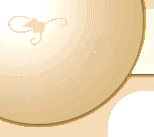
Herbert M.Shelton

|
|
|
Excerpts from
ORTHOPATHY by Herbert M. Shelton
|
Chapter XXI
Affections of the Skin - continued
|
AFFECTIONS OF THE OIL DUCTS
ASTEATITIS
COMEDONES (Blackheads)
CRUSTA LACTEA (Milk crust)
MILIUM (Grutum)
SEBORRHEA
SEBORRHEA SICCA (Dandruff)
AFFECTIONS OF THE SWEAT GLANDS
ANIDROSIS
BROMIDROSIS (Osmidrosis)
CHROMIDROSIS
HEMATIDROSIS
HYDROCYSTOMA
HYPERIDROSIS
SUDAMEN
URIDROSIS
AFFECTIONS OF THE HAIR
ALOPECIA (Baldness)
ALOPECIA AREATA
CANITIES (Gray hair)
AFFECTIONS OF THE NAILS
ATROPHY OF THE NAILS
LEUCONYCHIA
ONYCHIA
ONYCHORRHEXIS
ONYCHAUXIS
PANARIS
SKIN AFFECTIONS CAUSED BY OUTSIDE AGENTS
ARGYRIA
CHAPPED SKIN
ECCYMOSIS (Black-eye)
FROSTBITE
INTERTRIGO (chafing)
MILIARIA (Prickly heat)
PERNIO (Chilblain)
SUNBURN
NEOPLASMS OF THE SKIN
EPITHELIOMA
CYSTS
FATTY TUMOR (lipoma)
FIBROMA
STEATOMA (Wen)
PARASITIC SKIN AFFECTIONS
BOTFLY
ERYTHRASMA
GROUND ITCH
HARVEST MITE
PEDICULOSIS (Lousiness)
PORK MEASLES
RINGWORM
SCABIES (Itch)
STRAW ITCH
TINEA FAVOSA (Favus)
TINEA VERSICOLOR (Chromophytosis)
HOW TO SEARCH FOR A WORD ON THIS PAGE:
click "Edit"/"Find (on this page)" in the browser menu at top.
|
IF YOUR DISEASE IS MISSING:
Note that disease terminology may have changed since 1941. Also note that, as Dr. Bass writes in "How important is diagnosis?" - drug-free healing/detox can reverse all of a person's diseases, known or unknown, also without correct name or diagnosis (unless too far gone).
|
|
|
|
INTRODUCTION
 "Orthopathy" by Dr. Herbert M. Shelton contains a comprehensive analysis of most known diseases, and a general classification and guide to their treatment, based upon a natural wholistic interpretation and approach.
"Orthopathy" by Dr. Herbert M. Shelton contains a comprehensive analysis of most known diseases, and a general classification and guide to their treatment, based upon a natural wholistic interpretation and approach.
Dr. Shelton represents one of the world's greatest authorities in "Natural Hygiene", a philosophy and method of living according to the laws of life and Nature's plan for men's highest health and happiness, compiled from 175 years of experience of some of the most brilliant medical doctors and teachers. He was also the foremost authority on the use of fasting in the treatment of diseases, in which he supervised approximately 50,000 cases.
This natural approach, interpretation and nutritional treatment of disease, is presented here on the internet, I believe, for the first time to the general public as well as professionals, for those who are interested in an alternative, drugless, self-help method of understanding and treatment of most of men's illnesses.
Stanley S. Bass,
N.D. D.C. Ph.C., Ph.D., D.O., D.Sc., D.D., 5-05, www.drbass.com
|
|
"All of these affections of the sweat glands are to be cared for alike. The remedy is: remove the cause ... by freeing the body of toxemia and reforming the mode of living, particularly the mode of eating. Abandon overeating and stop the use of stimulants."
|
|
|








